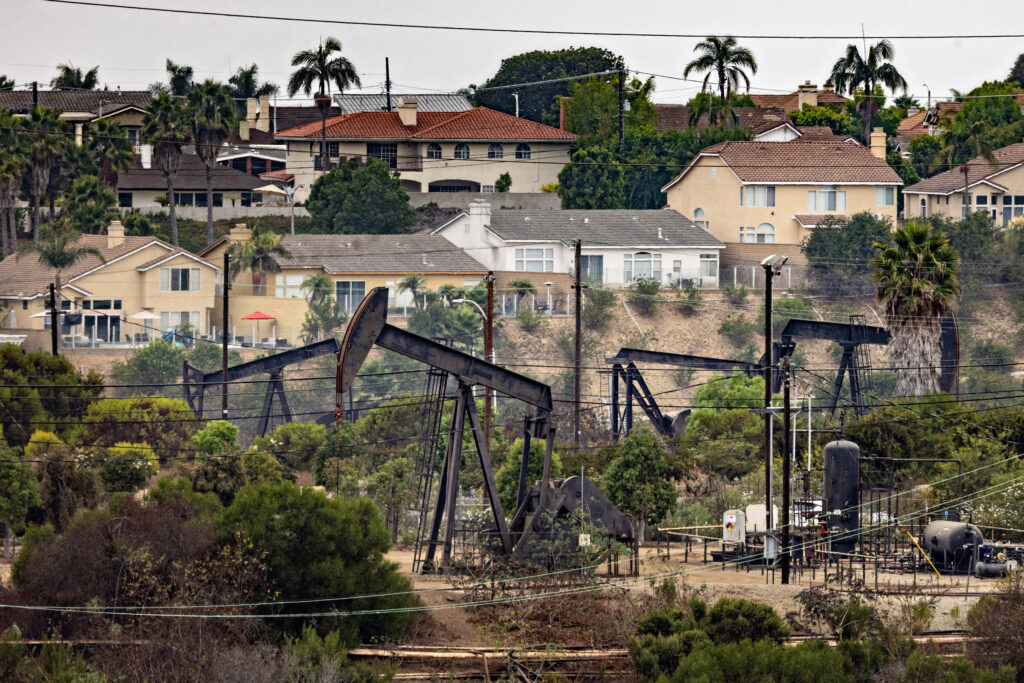On February 6, 2020, a week after the World Health Organization declared COVID-19 a public health emergency, the first Californian died of the virus in San Jose. By March, the San Francisco Bay Area saw a surge in cases, leading seven counties to implement shelter-in-place orders. By May, Los Angeles County became a hotspot, with Black and Latino residents twice as likely to die from the disease compared to whites.
Recent research highlights that communities affected by pollution, like those in Los Angeles County, face enhanced risks from infectious diseases. Health officials are concerned about bird flu sparking the next pandemic, and new findings suggest living near oil and gas wells exacerbates the impact of current pandemics.
The study published in GeoHealth in November identified higher COVID-19 infection and death rates among Californians living near high-producing oil and gas wells during the pandemic’s early months.
“We were concerned due to disparities in disease and death rates at the pandemic’s start,” said Helena Archer, a research fellow who led the study at UC Berkeley. She investigated how chronic exposure to pollutants from oil and gas wells affected COVID-19 outcomes.
Infectious diseases often affect communities with existing vulnerabilities, including limited health care access, asthma, and exposure to air pollution. Previous studies linked long-term pollution exposure to higher COVID-19 risk, affecting Latinos and low-income individuals most.
While the health risks of oil and gas wells are clear, Archer noted a lack of focus on their potential relationship to COVID-19 outcomes.
“The study results are, unfortunately, not surprising,” said Joan Casey, an environmental epidemiologist at the University of Washington. “We’ve consistently seen higher COVID infection and mortality risks in polluted communities.”
Overburdened Communities
Over a million Californians live within a kilometer of an active oil or gas well. Proximity to such sites has been linked to health issues like asthma, immunodeficiency, and heart failure. These conditions increase the risk of severe COVID-19.
Black and Latino populations face higher exposure to wells’ toxic emissions, including carcinogenic compounds and PM2.5 particles. Los Angeles County hosts the highest percentage of people living near active wells, predominantly affecting Black, Latino, and low-income residents.
Community advocacy groups have long recognized the pollutants from these wells, said David González, an environmental epidemiologist and collaborator on the research. The link between oil and gas wells and respiratory diseases was previously underexplored.
Oil and gas wells significantly contribute to air pollution, adding to COVID-19 risks in disproportionately affected neighborhoods, González noted. In 2020, California accounted for 13% of U.S. COVID-19 cases and 9% of deaths, while ranking fifth in crude oil production.
The study compared data on oil and gas well locations with COVID-19 cases and mortality, revealing higher death rates in areas near high-production wells during the pandemic’s initial months.
Residents near oil and gas wells face compounded social and environmental risks, Casey observed, with oil and gas exposure adding to these stressors. Researchers trace these disparities to racist housing policies, placing hazardous operations in communities of color.
Understanding environmental hazards is crucial as oil and gas drilling often occurs near homes, Archer emphasized. The research team cannot definitively explain why higher death rates occurred, but potential factors include underlying conditions limiting early treatment access.
Long-term exposure to pollutants from oil and gas wells might increase susceptibility to severe COVID-19 due to lung damage, González explained. More research could further illuminate health impacts from oil and gas industries.
Identifying environmental risks for vulnerable communities is vital for pandemic preparedness, especially when health information is limited, Archer stated.
“COVID-19 is a lasting reality,” González said, stressing the importance of considering how oil and gas development affects public health as future pandemics are addressed.
Original Story at insideclimatenews.org
